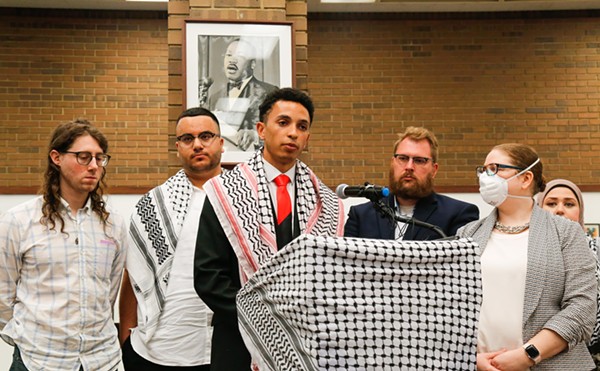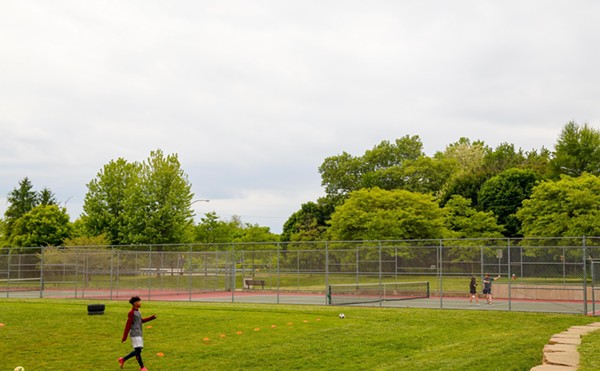“I think it's a call to action, a wake-up call,” OhioHealth Gynecological Oncology Specialist Dr. Kellie Rath told Cleveland Scene.
After nearly a decade of growth, proportions of adolescents aged 13-17 years who have received at least one dose of the HPV vaccine and adolescents who are up-to-date on HPV vaccinations have both stagnated.
Children can start getting HPV vaccinations at age nine but the number of doses required to be considered fully vaccinated against HPV depends on their age. For children under the age of 15, only two vaccinations are needed. For those 15 through 26 years old three shots are required.
“If we recognize it, and providers are able to catch these kids when they're coming for their well-child checks and catch up their vaccination series, I think that it is something that can be overcome by getting that vaccine as a catch up,” Dr. Rath said. “But if it’s not something that is recognized we could have a gap in kids without the vaccine who will have an increased risk of getting pre cancers and cancers in the future.”
HPV infections are incredibly common and experts agree most people will contract HPV at some point in their lives. However, there are many different strains of HPV and some can cause serious medical issues.
“Almost all of us are exposed to one of the higher risk types of HPV in our lifetime and the high-risk HPV can lead to precancers and cancers of the cervix, vagina, vulva, penis, anus, as well as head and neck cancers,” said Dr. Rath.
The CDC estimates that 14 million Americans contract HPV annually and more than 42 million Americans are infected with types of HPV that cause disease.
“The chance of developing an actual cancer is not large; most people clear the virus on their own,” Dr. Rath said. “However, a lot of people will have precancerous changes on the cervix that can lead to procedures on the cervix that can cause trouble carrying pregnancies in the future.”
The HPV vaccine is overwhelmingly safe. Most side effects, like swelling or fever, clear up within a couple of days and just 0.0018% of doses resulted in reports of serious health issues, according to the National Cancer Institute.
“[Cervical cancer] is an entirely preventable cancer by a very safe vaccine,” said Dr. Rath. “And so, although it is not an incredibly common cancer, by vaccinating early we can prevent these things from happening.”
Because the pandemic caused people to miss regular medical appointments where vaccinations might have been due, researchers theorize that it may have contributed to stagnant HPV vaccination rates.
There was also a noticeable gap between insurance groups. From 2015 through 2021, teens covered by Medicaid insurance had higher vaccination rates against HPV than those covered by private insurance. However, in 2022 HPV vaccination rates among adolescents insured by Medicare dropped 3.3% to roughly the same level as those privately insured.
But teenagers not covered by insurance remain the most at-risk, as their HPV vaccination rates are consistently the lowest.
The HPV vaccine is part of the CDC’s federally-funded Vaccinations for Children program, so it’s available free for children and adolescents who are Medicaid eligible, uninsured, underinsured or are defined as American Indian or Alaska Native by the Indian Health Care Improvement Act.
However, accessibility can still be a problem because of complications like transportation and employment hours.
While most cervical cancer is caused by HPV, the idea that only girls should be vaccinated against HPV is a misconception and can hinder vaccinations.
“HPV doesn't just cause cervical cancer, and actually the most common HPV-related cancer is not cervical cancer,” Dr. Rath said. “Currently, it’s actually head and neck cancer…which are much more common in men and actually are more commonly diagnosed than cervical cancer and there's not a screening for those cancers.”
Unlike cervical cancer, which has primary prevention through the HPV vaccine and secondary prevention through screening, “head and neck cancer”—or oropharyngeal cancer—only has primary prevention through the vaccine.
“Parents should know that the HPV vaccine is safe and effective and should be given to both male and female children,” said Dr. Rath. “The CDC is advocating starting at age nine, because we know the vaccine works best when kids are younger than before they have any exposures.”
Adolescents and young adults who aren't protected against HPV can get vaccinated until they are 27 years old, after which point the vaccination isn’t recommended because most people have already been exposed to HPV.












